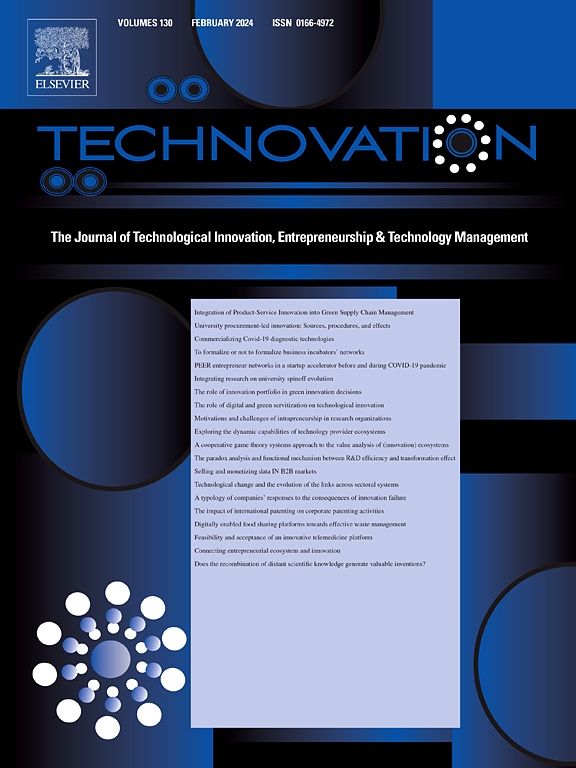多级政府在转型创新过程中的整体作用:中国的理论框架与证据
IF 11.1
1区 管理学
Q1 ENGINEERING, INDUSTRIAL
引用次数: 0
摘要
转型创新缺乏社会推动力,这就要求政府发挥更具指导性的作用。然而,关于政府如何协调创新过程以促进转型创新的探索却十分有限。针对这一空白,我们构建了一个三维分析框架,以反映多级政府在多阶段转型创新过程中的整体角色组合。本研究借鉴制度理论和相关研究,将政府在转型创新中的八个关键角色概念化:规划、协调、分配、投资、提供、监管、评估和宣传。通过对中国可持续发展议程创新示范区这一最新政策实验案例的研究,本研究区分了政府角色在转型创新过程四个阶段中的不同侧重点。因此,我们揭示了政府在整个创新过程中促进转型创新的治理能力。最后,我们揭示了中央政府、省级政府和市级政府之间偏好的异质性,并发现鉴于转型创新过程各个阶段的不同特点,这些多层次的治理行为体发挥着不同但协同的作用。这些政府必须协同利用各种政策工具,在其行政权力范围内发挥最大作用。研究结果表明,在多阶段转型创新过程和多级政府中,政策应具有整体性。本文章由计算机程序翻译,如有差异,请以英文原文为准。
The holistic role of multi-level government in transformative innovation process: Theoretical framework and evidence from China
The lack of social impetus for transformative innovation foregrounds a more directional role for the government. However, there is limited exploration on how the government can orchestrate innovation process to promote transformative innovation. We address this gap by constructing a three-dimensional analytical framework that reflects the holistic role combinations of multi-level government across the multi-stage transformative innovation processes. Drawing on institutional theory and related research, this study conceptualizes eight critical roles of the government: planning, coordinating, allocating, investing, providing, regulating, evaluating, and publicizing in transformative innovation. By examining a recent policy experiment case of Sustainable Development Agenda Innovation Demonstration Zones in China, this study differentiates the distinct emphases of government roles across four stages of the transformative innovation process. Thus, we reveal the governance capabilities of the government throughout the innovation process to facilitate transformative innovation. Finally, we uncover the heterogeneity of preferences among central, provincial, and municipal governments and find that these multi-level governance actors have differentiated but synergistic roles given the distinct characteristics of various stages of the transformative innovation process. These governments must collaboratively utilize diverse policy instruments to maximize their roles within the scope of their administrative authority. The results suggest that policies should be holistic across the multi-stage transformative innovation processes and multi-level governments.
求助全文
通过发布文献求助,成功后即可免费获取论文全文。
去求助
来源期刊

Technovation
管理科学-工程:工业
CiteScore
15.10
自引率
11.20%
发文量
208
审稿时长
91 days
期刊介绍:
The interdisciplinary journal Technovation covers various aspects of technological innovation, exploring processes, products, and social impacts. It examines innovation in both process and product realms, including social innovations like regulatory frameworks and non-economic benefits. Topics range from emerging trends and capital for development to managing technology-intensive ventures and innovation in organizations of different sizes. It also discusses organizational structures, investment strategies for science and technology enterprises, and the roles of technological innovators. Additionally, it addresses technology transfer between developing countries and innovation across enterprise, political, and economic systems.
 求助内容:
求助内容: 应助结果提醒方式:
应助结果提醒方式:


